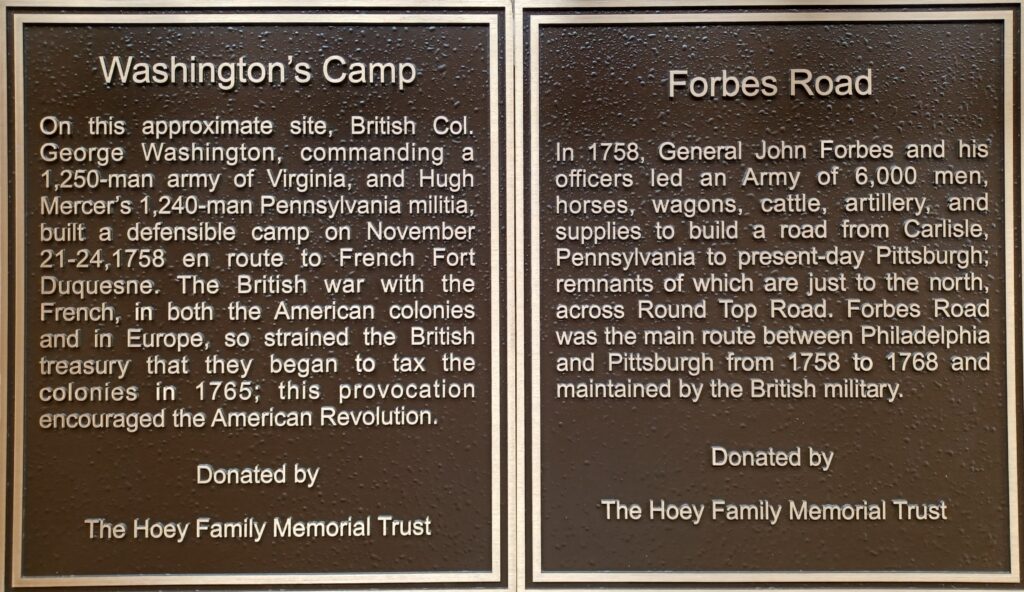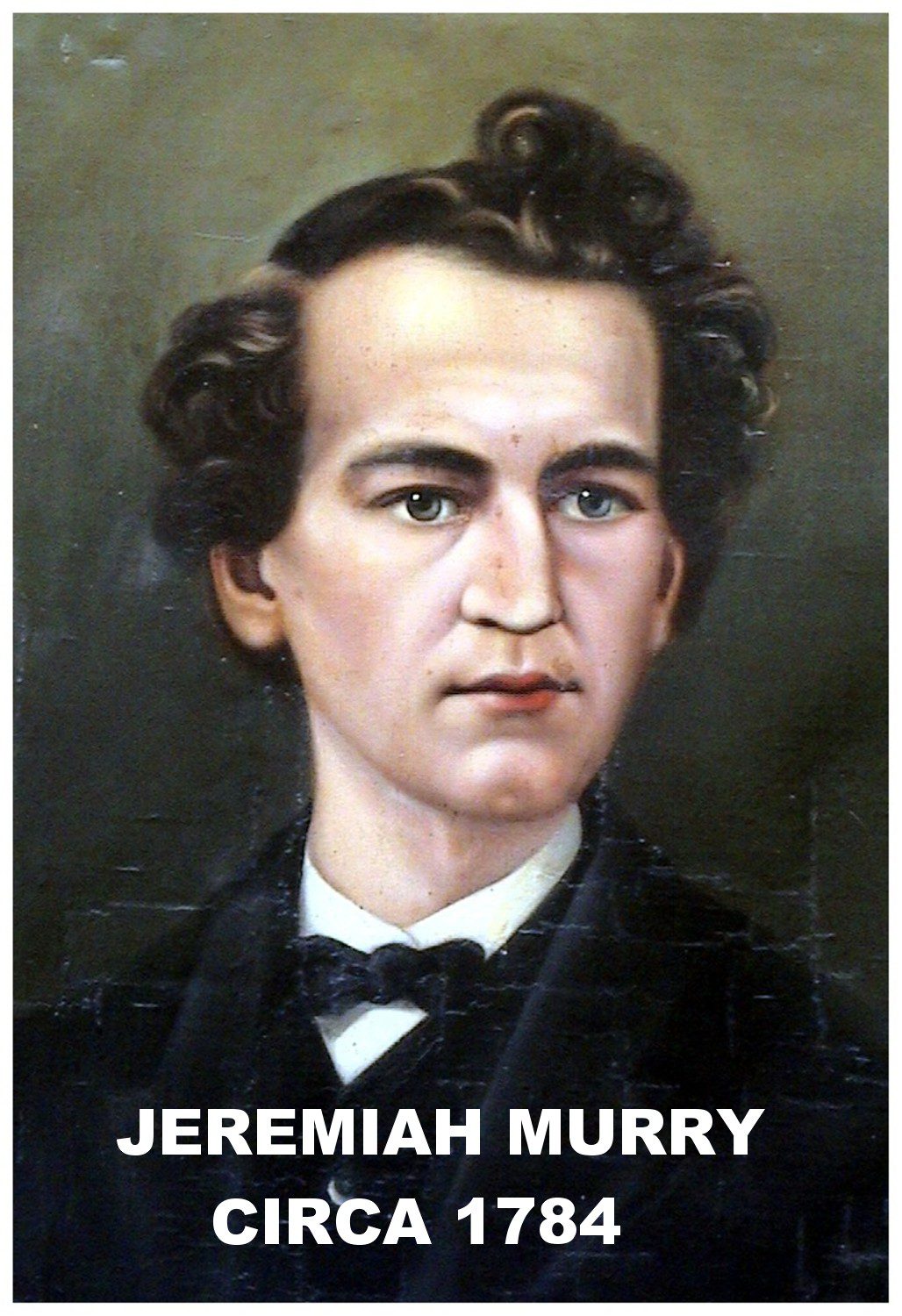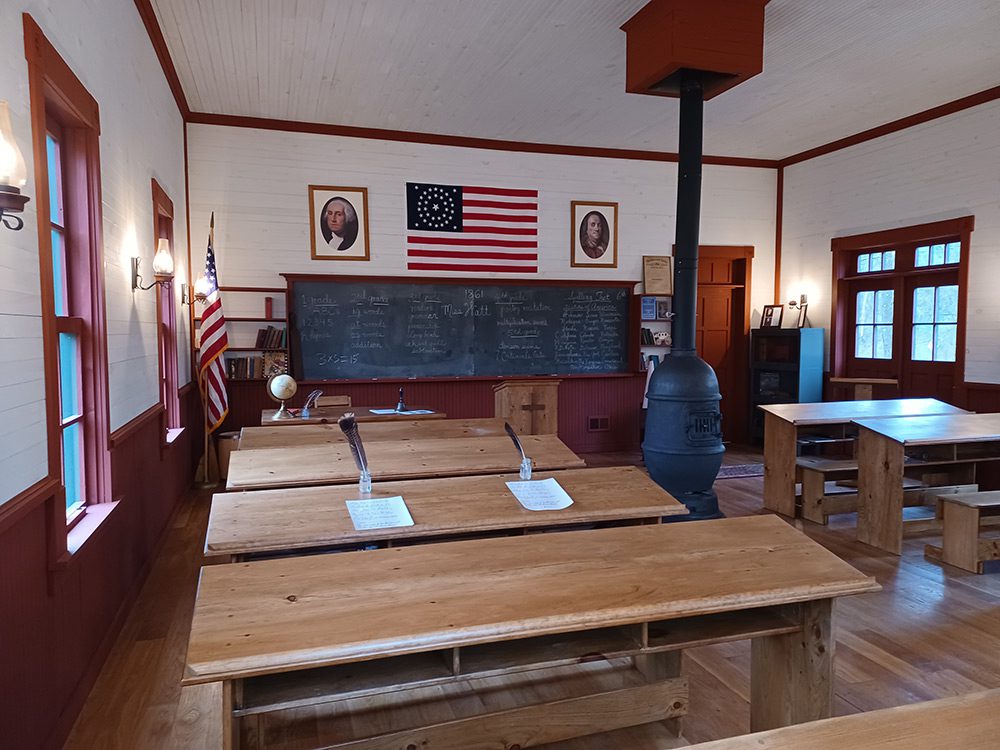History of Murrysville
1758 – Forbes Road
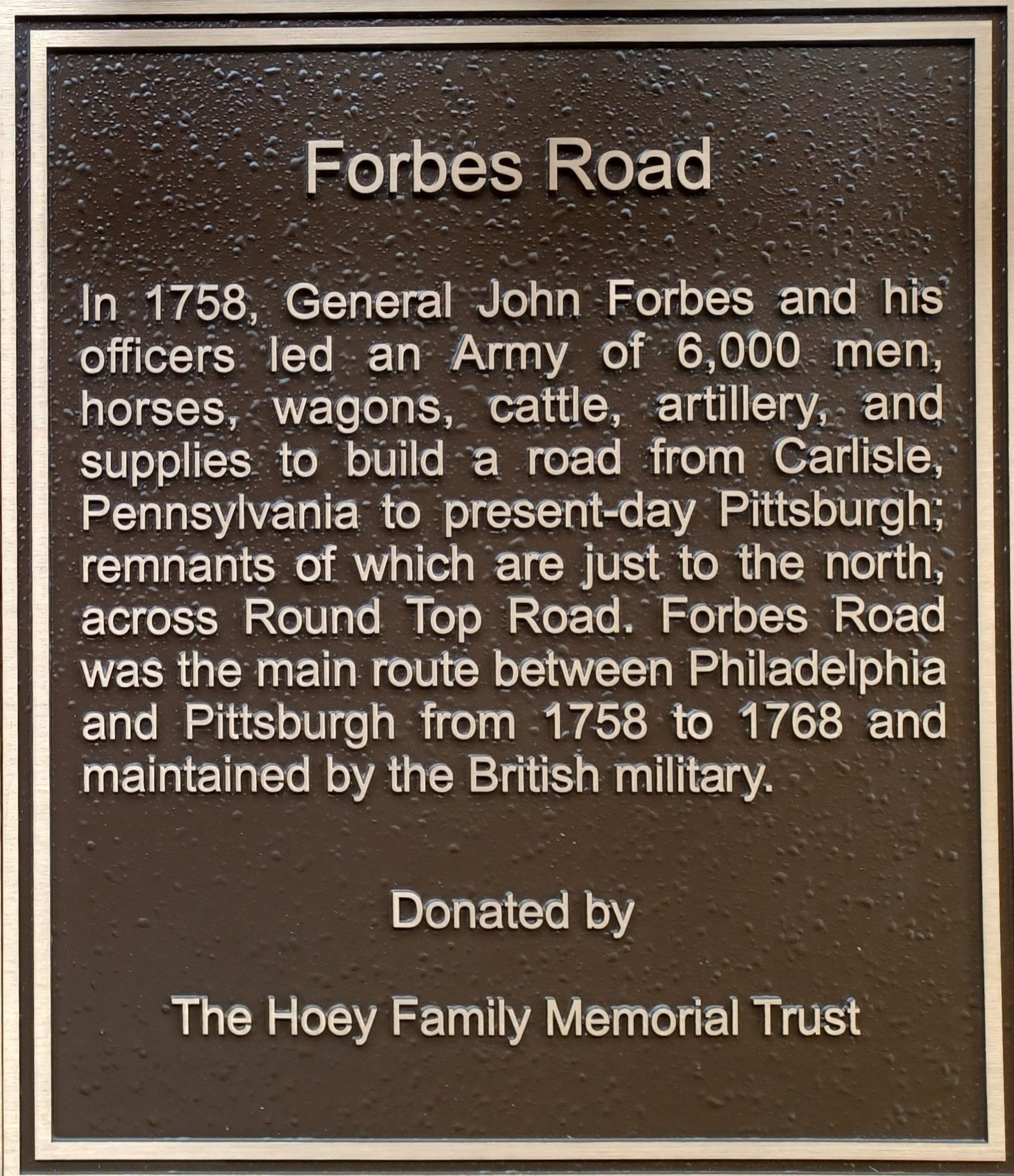
General John Forbes led an army of 6,000 men to build a road from Carlisle to present day Pittsburgh. They crossed the Allegheny Mountains with their horses, wagons, cattle artillery and supplies enroute to the confluence of the Allegheny and Monongehela Rivers. The road was part of the main route from Philadelphia to Pittsburgh from 1758 to 1768, maintained by the British Military.
November 21-24, 1758
Washington’s Encampment
Col. George Washington, his 1,250 man Army of Virginia, and Hugh Mercer’s 1,240 man militia built a temporary, defensible camp on their way to Fort Duquesne. They were using the newly created Forbes Road. They spent three days near what is now Round Top Road and School Road South before carrying on to Fort Duquesne
April 7, 1779 – Abby Byram and her father captured by the Seneca
The Byram Family arrived in the Lyons Run area in the autumn of 1777. There had been ongoing threats of hostile Native Americans spring of 1779 that drove the Byram Family to a Block House near Manor Station. After a few days of waiting, Edward Byram, accompanied by his daughter, Abby, age fourteen, returned to their homestead to assess the situation. Several natives found them working on their farm. Mr. Byram threw down his weapon knowing that if he made any aggressive actions, he and his daughter would surely be killed. They were taken captive and marched North to the Niagara region. They were held until 1780 at various locations. When they were finally released they started the long walk home with only the clothes on their backs. They walked about 350 miles South to the town of Morristown, N.J., from where they had originally embarked on their move to the Murrysville area. Abby remained in Morristown with her aunts and other family for another six or seven years. Edward Byram returned to his family on Lyons Run, arriving on October 5, 1780. Abby lived 86 years, she is interred in the Presbyterian Church Cemetery on North Hills Road.
1781 – Franklin Township organized
1785 – Jeremiah Murry arrives in the Turtle Creek Valley
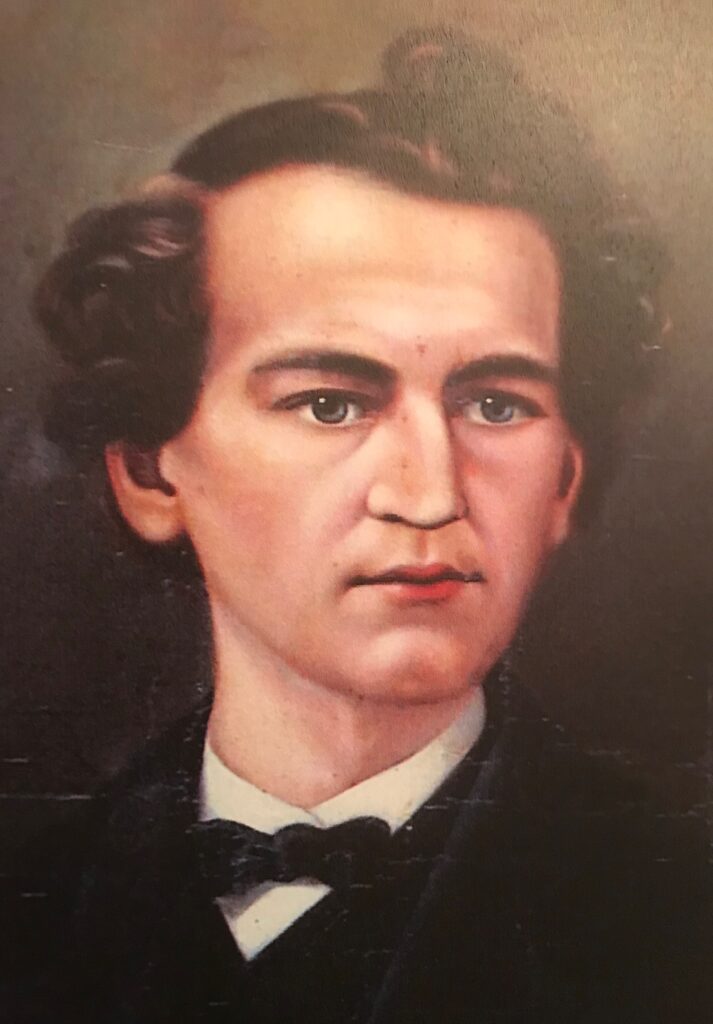
Jeremiah, his wife Ann, and their baby daughter Nancy built a cabin a few hundred yards from where Forbes Road passed, on the Northeast corner of the current Vincent Hall Road.
October 1, 1788 – Samuel Hoey purchases Hoey/Staymates Cabin
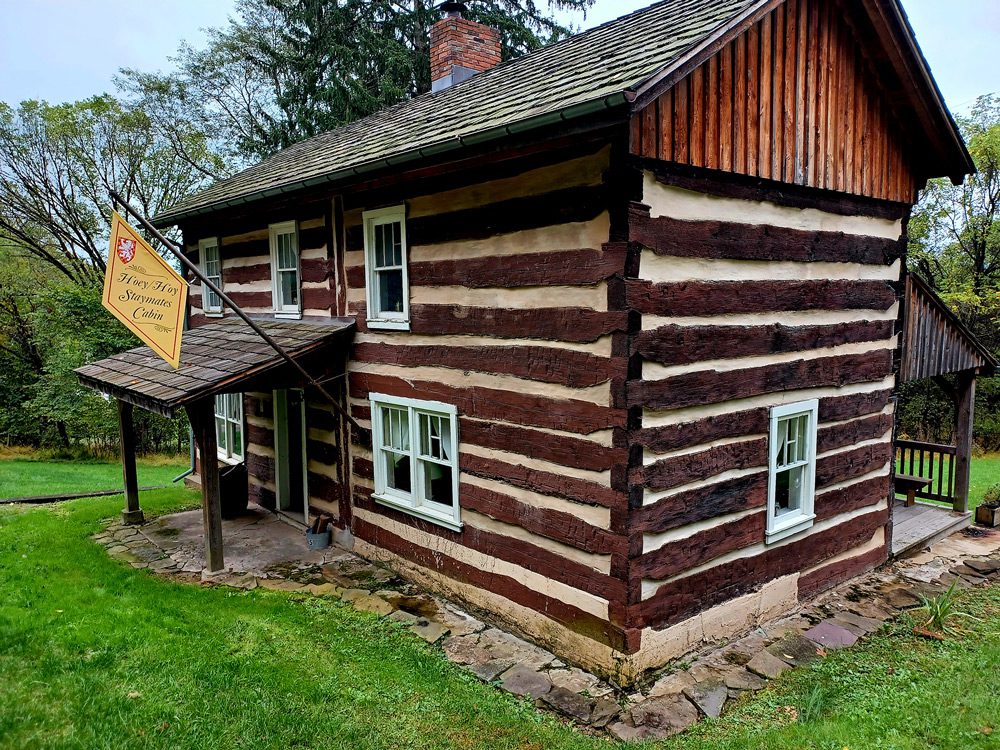
The property, originally owned by John Byron, was purchased on October 1, 1788 by Samuel Hoey. The Hoey family remained on the property until 1852 when William Staymates purchased what remained of the original property, 97 acres and the cabin farmstead.
1819-1821 – Northern Turnpike
Over the years, Forbes Road had begun to deteriorate and a push for new roads swept across Pennsylvania. Originally discussed in 1787, it wasn’t until March 13, 1816 that the Pennsylvania State Generally Assembly passed an act to support the creation of an “Artificial Road” from Harrisburg to Pittsburg. On January 13, 1819, a company was incorporated to bring the Northern Turnpike from New Alexandria through Murrysville. That particular stretch of road would be constructed from 1819 to 1821. Much of this Road would later become Old William Penn Highway. From the Cozy Inn Cuttof, through Town square to Haymaker Run, the road still follows the original Toll Road path. There is a Toll House that stands on West Pike as part of the Sampson/Clark Homestead, converted from a cabin built in 1784. The Toll House was refurbished, saving the original double sided chimney. The Murrysville Historical Preservation Society opens it to the public for the Fall Festival, and periodically throughout the year.
1820 – Murrysville Founded
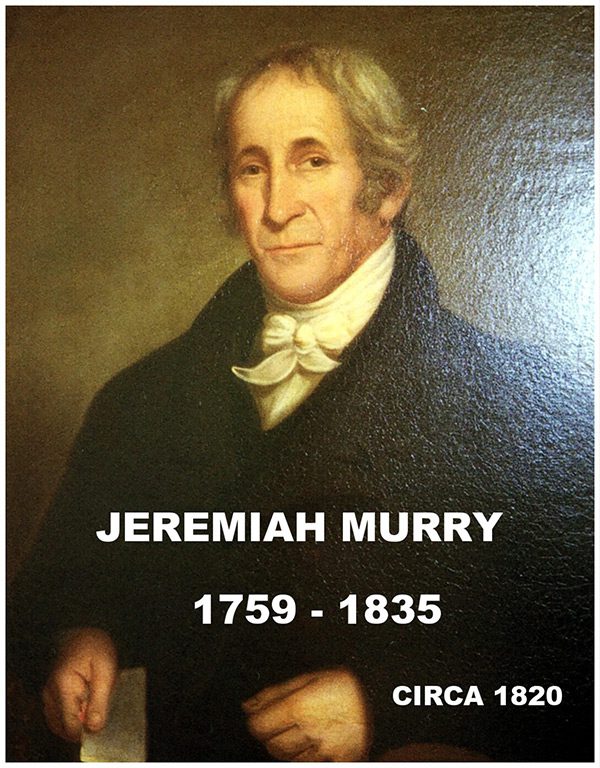
Jeremiah Murry came to the new land of America in 1781. He made his way across the Allegheny mountains with his new wife, Ann Montgomery, and settled on the banks of Turtle Creek. He became a miller, merchant and Justice of the Peace. With the new Northern Turnpike routed through the area, Jeremiah laid out a town on his property using the Turnpike as Main Street.
1830’s – Clark School
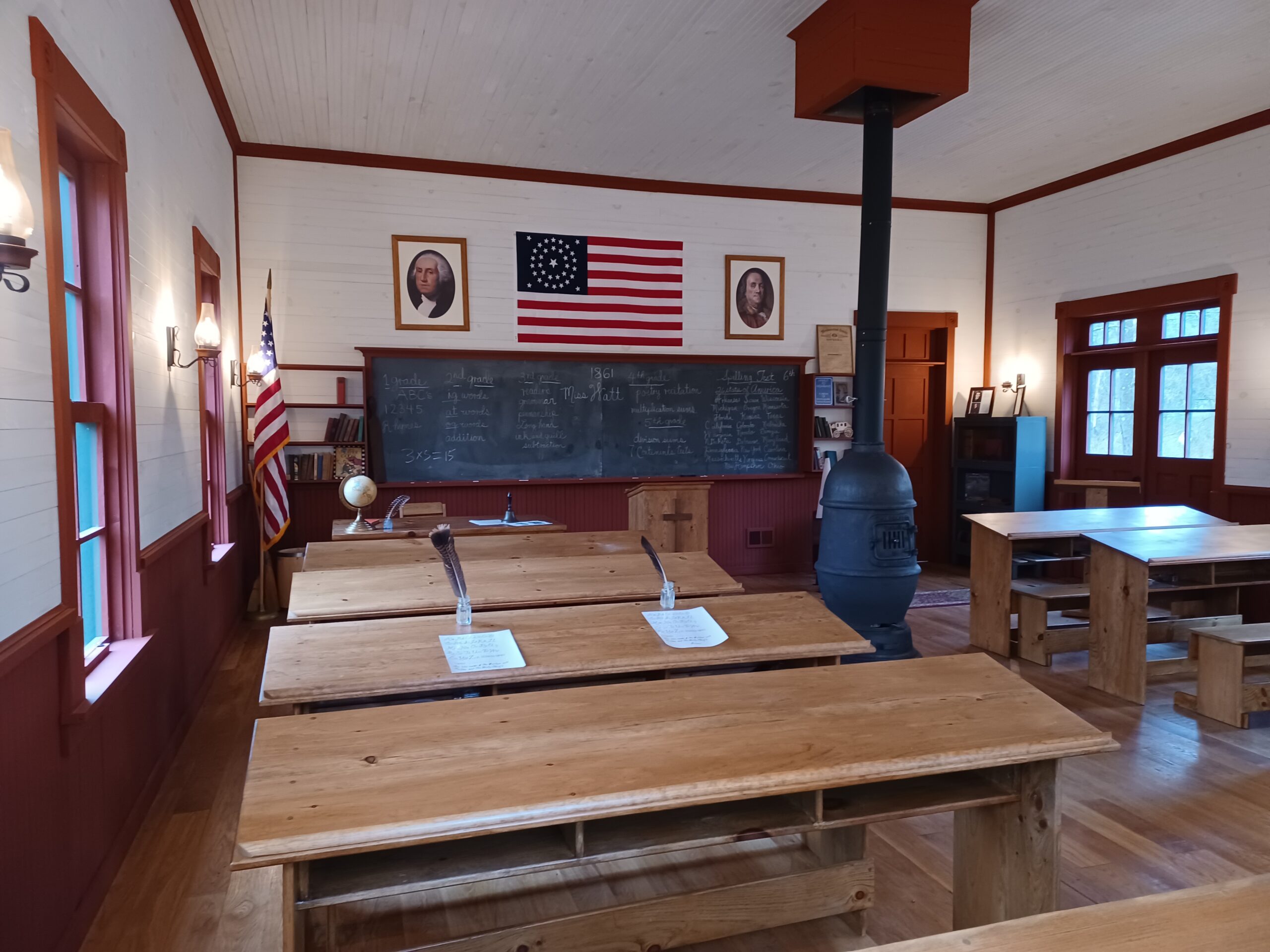
Jeremiah Murry came to the new land of America in 1781. He made his way across the Allegheny mountains with his new wife, Ann Montgomery, and settled on the banks of Turtle Creek. He became a miller, merchant and Justice of the Peace. With the new Northern Turnpike routed through the area, Jeremiah laid out a town on his property using the Turnpike as Main Street.
1852 – William & Susannah Staymates purchase 97 acres of the Hoey Family Homestead
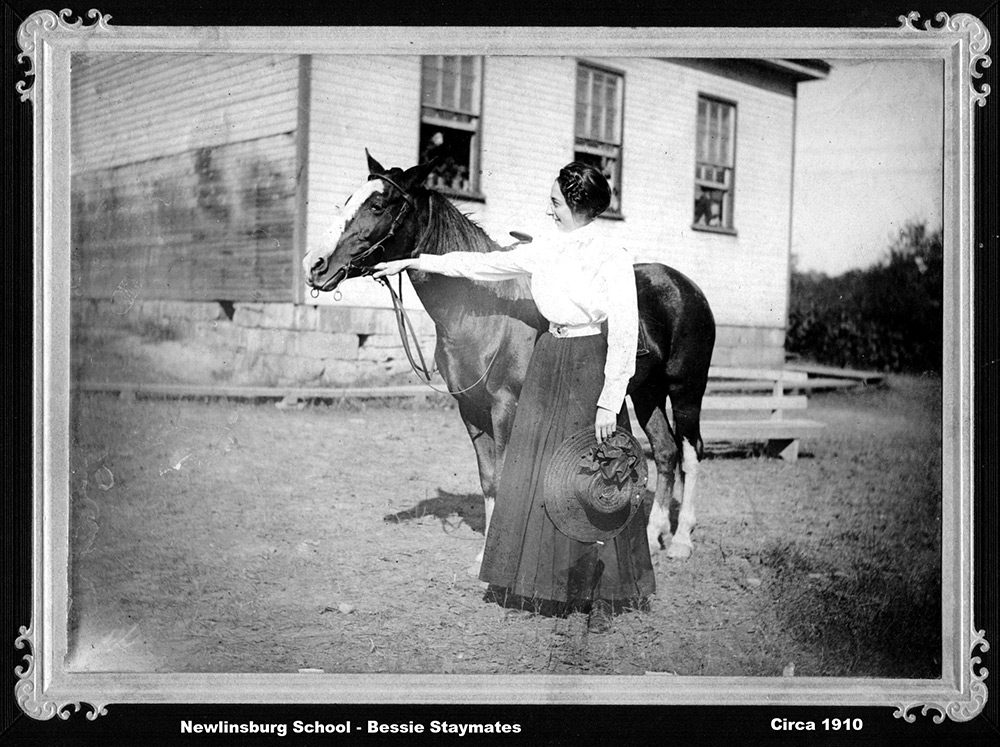
The Staymates family owned the farm into the 1970’s, when Betsy Staymates bequeathed it to the Girl Scouts when she passed away in 1972. Besty Staymates lived on the property her entire life. She was the eldest of 12 children raised in the cabin. Bessie became the breadwinner in the family with her father’s untimely death in 1907. She began teaching and would travel to area schools on her horse. She remained an educator her entire life, eventually becoming principal at Sardis school, from where she retired in 1955.
1861 – First School Founded
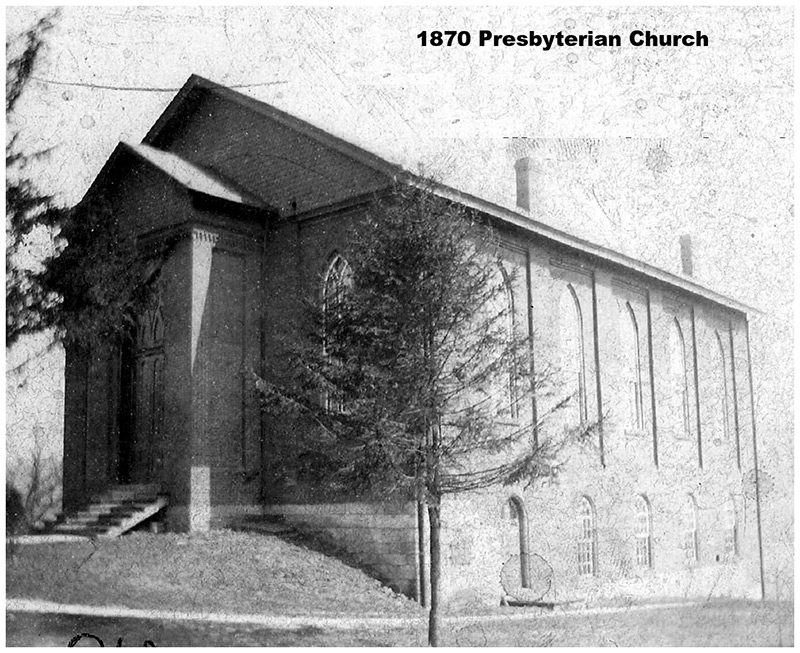
Turtle Creek Academy is founded by Francis Laird Stewart, conducting classes in his father’s home. He moved classes to the Presbyterian Church after it was constructed. was built and the school became the “Laird Institute”.
1878 – Haymaker Gas Well
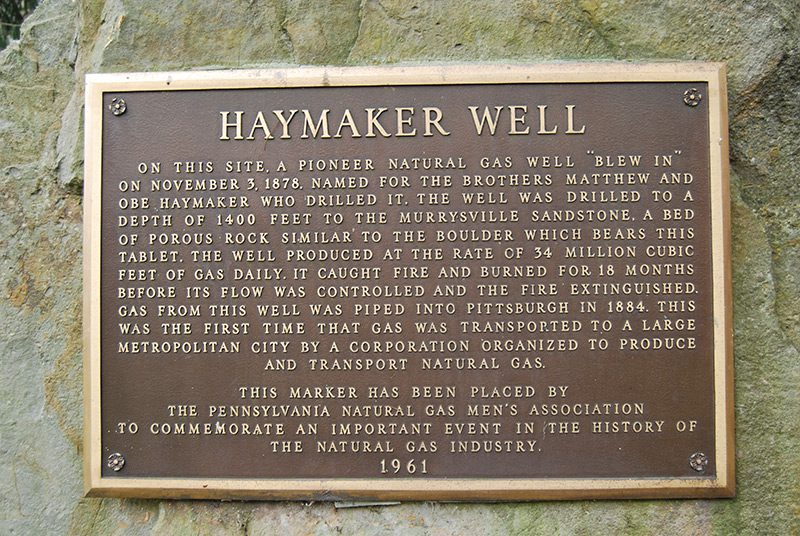
In 1878, brothers Michael and Obediah Haymaker were drilling for oil in Murrysville. Instead, they found gas. The force of the gas escaping tossed equipment clear of the site, and gas continued to roar from the ground for nearly three years. The Haymakers didn’t know how to control the resource. In September 1881, the gas accidentally caught fire and burned for a year and a half; for miles and miles around, there was daylight 24 hours a day. Finally, the Haymaker brothers used a smokestack to control the well and the fire was finally extinguished. They sold the well to Keystone Gas Company in 1880. A Chicago man, Milton Weston, originally wanted to purchase the well but he had paid only a small portion of the $20,000 selling price during the course of a year, allowing Pew to take over ownership. Insisting ownership be given to him, Weston and about 50 armed men arrived at the well site in November 1883. A melee ensued and Obediah Haymaker was fatally stabbed; two men, including Weston, were convicted of Haymaker’s murder. The Haymaker well is the first commercial gas well in the country.
1891- Railroad comes to Murrysville
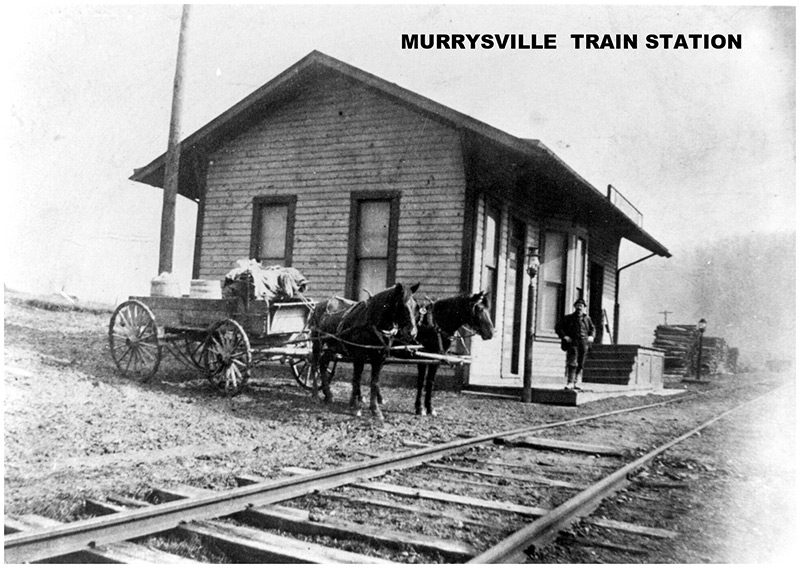
The railroad station was located at the South end of Carson, near the community center.
1911 – Export is incorporated as a borough
1928 – First Fire Station
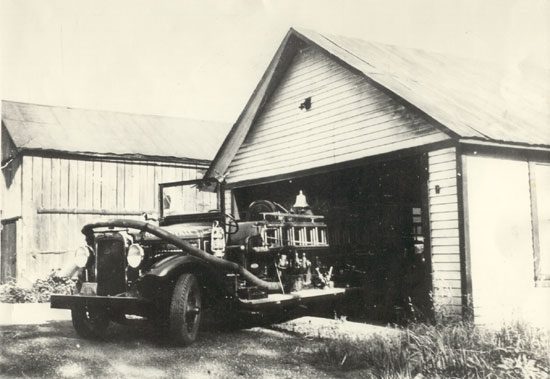
1933 – Murrysville Tree Sign

In 1933, under the direction of Scoutmaster F. M. Sloan, the Boy Scouts planted 850 Scotch and Red pines to form the 125 by 650 foot Murrysville Tree Sign. The sign garnered a reputation as the largest living sign in the world; the”Y” points to the site of the Haymaker gas well. During the 1980s, the Sportsmen and Landowners Alliance of Murrysville replanted the trees and currently maintains the site.
1978 – Franklin Township became the Municipality of Murrysville
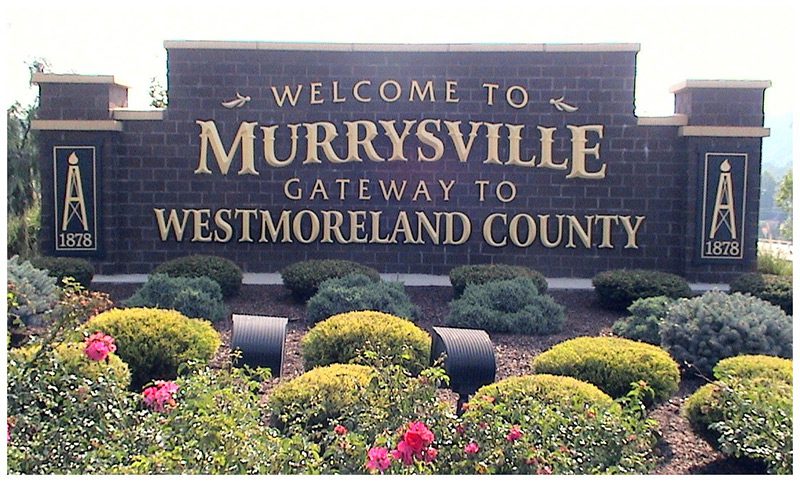
Murrysville’s Timeline
1758 – Forbes Road
General John Forbes led an army of 6,000 men to build a road from Carlisle to present day Pittsburgh. They crossed the Allegheny Mountains with their horses, wagons, cattle artillery and supplies enroute to the confluence of the Allegheny and Monongehela Rivers. The road was part of the main route from Philadelphia to Pittsburgh from 1758 to 1768, maintained by the British Military.
November 21-24, 1758 – Washington’s Encampment
Col. George Washington, his 1,250 man Army of Virginia, and Hugh Mercer’s 1,240 man militia built a temporary, defensible camp on their way to Fort Duquesne. They were using the newly created Forbes Road. They spent three days near what is now Round Top Road and School Road South before carrying on to Fort Duquesne
April 7, 1779 – Abby Byram and her father captured by the Seneca
The Byram Family arrived in the Lyons Run area in the autumn of 1777. There had been ongoing threats of hostile Native Americans spring of 1779 that drove the Byram Family to a Block House near Manor Station. After a few days of waiting, Edward Byram, accompanied by his daughter, Abby, age fourteen, returned to their homestead to assess the situation. Several natives found them working on their farm. Mr. Byram threw down his weapon knowing that if he made any aggressive actions, he and his daughter would surely be killed. They were taken captive and marched North to the Niagara region. They were held until 1780 at various locations. When they were finally released they started the long walk home with only the clothes on their backs. They walked about 350 miles South to the town of Morristown, N.J., from where they had originally embarked on their move to the Murrysville area. Abby remained in Morristown with her aunts and other family for another six or seven years. Edward Byram returned to his family on Lyons Run, arriving on October 5, 1780. Abby lived 86 years, she is interred in the Presbyterian Church Cemetery on North Hills Road.
October 1, 1788 – Samuel Hoey purchases Hoey/Staymates Cabin
The property, originally owned by John Byron, was purchased on October 1, 1788 by Samuel Hoey. The Hoey family remained on the property until 1852 when William Staymates purchased what remained of the original property, 97 acres and the cabin farmstead.
1819-1821 – Northern Turnpike
Over the years, Forbes Road had begun to deteriorate and a push for new roads swept across Pennsylvania. Originally discussed in 1787, it wasn’t until March 13, 1816 that the Pennsylvania State Generally Assembly passed an act to support the creation of an “Artificial Road” from Harrisburg to Pittsburg. On January 13, 1819, a company was incorporated to bring the Northern Turnpike from New Alexandria through Murrysville. That particular stretch of road would be constructed from 1819 to 1821. Much of this Road would later become Old William Penn Highway. From the Cozy Inn Cuttof, through Town square to Haymaker Run, the road still follows the original Toll Road path. There is a Toll House that stands on West Pike as part of the Sampson/Clark Homestead, converted from a cabin built in 1784. The Toll House was refurbished, saving the original double sided chimney. The Murrysville Historical Preservation Society opens it to the public for the Fall Festival, and periodically throughout the year.
1820 – Murrysville Founded
Jeremiah Murry came to the new land of America in 1781. He made his way across the Allegheny mountains with his new wife, Ann Montgomery, and settled on the banks of Turtle Creek. He became a miller, merchant and Justice of the Peace. With the new Northern Turnpike routed through the area, Jeremiah laid out a town on his property using the Turnpike as Main Street.
1830’s – Clark School
Founded in the early 1830’s, the one room schoolhouse sat on a corner of the Clark Farm near what is now West Pike (the old Northern Turnpike) and Kistler Road. There would later be 2 more school houses built in that immediate area, one of which still stands. The early 1900s red brick schoolhouse was converted to a private residence in the 1950s and is still used as a home today.
1852 – William & Susannah Staymates purchase 97 acres of the Hoey Family Homestead
The Staymates family owned the farm into the 1970’s, when Betsy Staymates bequeathed it to the Girl Scouts when she passed away in 1972. Besty Staymates lived on the property her entire life. She was the eldest of 12 children raised in the cabin. Bessie became the breadwinner in the family with her father’s untimely death in 1907. She began teaching and would travel to area schools on her horse. She remained an educator her entire life, eventually becoming principal at Sardis school, from where she retired in 1955.
1878 – Haymaker Gas Well
In 1878, brothers Michael and Obediah Haymaker were drilling for oil in Murrysville. Instead, they found gas. The force of the gas escaping tossed equipment clear of the site, and gas continued to roar from the ground for nearly three years. The Haymakers didn’t know how to control the resource. In September 1881, the gas accidentally caught fire and burned for a year and a half; for miles and miles around, there was daylight 24 hours a day. Finally, the Haymaker brothers used a smokestack to control the well and the fire was finally extinguished. They sold the well to Keystone Gas Company in 1880. A Chicago man, Milton Weston, originally wanted to purchase the well but he had paid only a small portion of the $20,000 selling price during the course of a year, allowing Pew to take over ownership. Insisting ownership be given to him, Weston and about 50 armed men arrived at the well site in November 1883. A melee ensued and Obediah Haymaker was fatally stabbed; two men, including Weston, were convicted of Haymaker’s murder. The Haymaker well is the first commercial gas well in the country.
1911 – Export is incorporated as a borough
1933 – Murrysville Tree Sign
In 1933, under the direction of Scoutmaster F. M. Sloan, the Boy Scouts planted 850 Scotch and Red pines to form the 125 by 650 foot Murrysville Tree Sign. The sign garnered a reputation as the largest living sign in the world; the”Y” points to the site of the Haymaker gas well. During the 1980s, the Sportsmen and Landowners Alliance of Murrysville replanted the trees and currently maintains the site.

